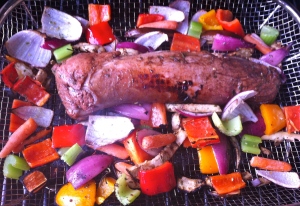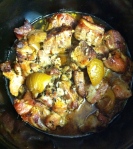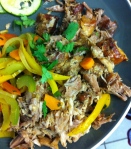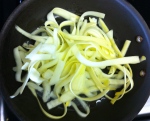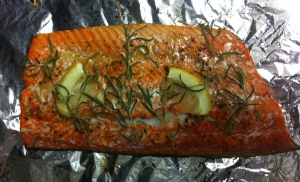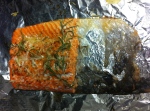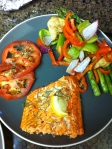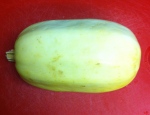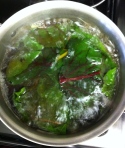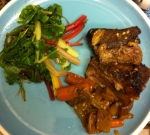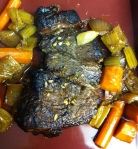Hooray for experiments in meat cookings! I had not had much (okay…none) experience with cooking pork tenderloin, but I can’t say the idea hadn’t frequently piqued my interest. As ridiculous as it may sound, I love the idea of a plate full of several small medallions of sliced meat, “crusted” on the outside with flavor and the natural char from the grill. So flavorful, yet so simple! None of this is truly important, I know – it all becomes “one” in the stomach, after all. But why not let the simplest things become the enjoyment within the culinary experience? I’m all for these little mini, meaty delights – just give me lots of those cute little rounds o’ protein!
At my last Trader Joe’s stock-up session, I decided to pull a log of pork tenderloin from the meat fridge. Commitment is the in the purchase after all; so soon after, I did a quick internet search to nail down the important concepts – such as – how high to heat the grill, how long to cook it, and what people are typically using to marinate (all building up to the development of ideas to chalk it up to a 4HB-worthy quality). So I decided to keep it simple this go-around….and trust me; sometimes less IS more! (I feel like I say that a lot. That’s good).
Now to the part where we make good things happen.
Ingredients:
1 lb pork tenderloin
1/2 cup extra virgin olive oil
1/2 cup balsamic vinegar
A few springs, fresh rosemary (or 1 tsp dried rosemary)
Salt & Pepper, to taste
1 tsp garlic, minced
Directions:
- Season tenderloin with a light salting, and less-light peppering. If you’re feeling extra-oderificly frisky, add a touch of garlic salt in lieu of regular salt.
- Pour the extra virgin olive oil and balsamic vinegar into a gallon-sized Ziploc bag. Toss in the rosemary. Put in the fridge and let marinate for at least 30 minutes (or overnight!).
- Meanwhile, this would be a good time to start preparing the veggies. Since this particular pork tenderloin will be grill-roasted, I thought I’d take advantage of the cooking tenderloin to allow some veggies to roast right alongside with it, soaking up its smoky & juicy goodness. I selected “good” grilling/roasting veggies, such as: red onion, bell peppers, asparagus, and some squash.
- On a grill preheated at medium-high, place the pork tenderloin either directly on the oiled grate, on a roasting pan (as imaged), or even on/in aluminum foil. The latter of the two would make the most sense if you are planning to roast your veggies alongside the tenderloin. But it works just as well to grill these on separate space on the grill. Don’t limit yourself!
- Cook the tenderloin for about 12 minutes, rolling it to alternating sides every few minutes or so to ensure even cooking. If you reserved the freezer bag of marinade, you can use it to baste the tenderloin, occasionally, while it’s grilling.
- About midway into the cooking process, add your chopped veggies alongside the tenderloin. My first try at this, I added the veggies at the same time as the tenderloin, but ended up removing them much earlier (and covering with foil to keep warm!), as they clearly cook much faster than the meat. Noted for future!
- Lay a sprig or two of fresh rosemary over top the tenderloin/veggies for added flavor, if preferred.
- After about 12 minutes, remove the tenderloin from the grill and let sit for a few minutes.
- Slice up into medallions (mmm juicy!).
- Distribute sliced pork rounds and piled-up roasted veggies to your plates!
